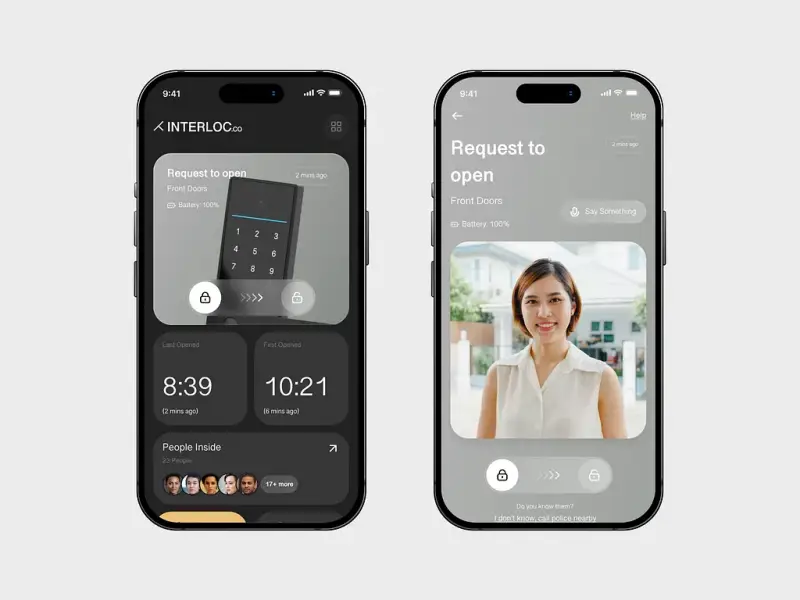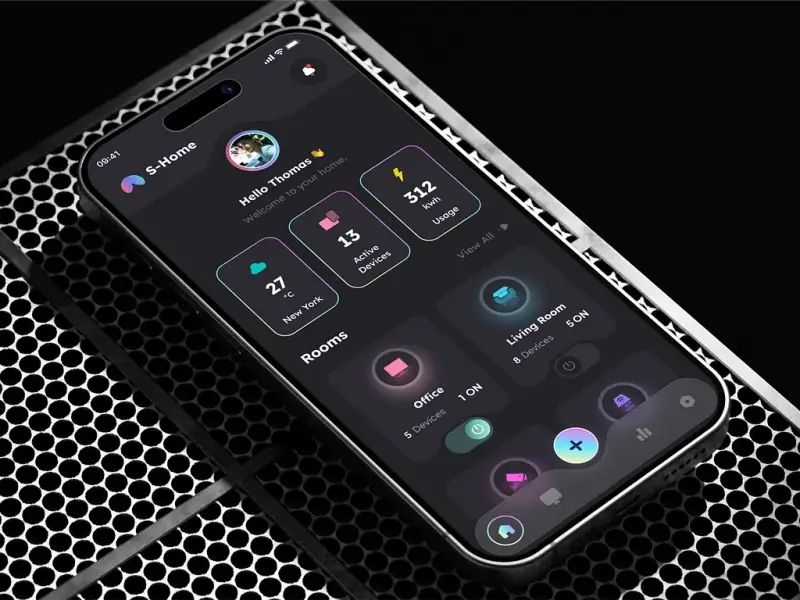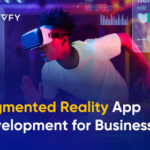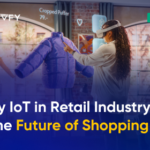10 Latest IoT Trends In 2025 That You Should Know About
- TECHVIFY Team
- 0 Comments
The Internet of Things (IoT) is playing an increasingly important role in our daily lives and industries. As more devices and systems integrate machine-based intelligence, real-time monitoring, and connectivity, IoT is transforming consumer experiences, business operations, and public services.
Artificial intelligence (AI) and data from connected devices are accelerating IoT applications across key areas like cybersecurity, education, automation, and healthcare. According to the IEEE Global Survey on Technology Impact, released in October 2024, 58% of respondents—twice as many as the previous year—believe AI will be one of the top technologies in 2025. This includes predictive and generative AI (GenAI), machine learning, and natural language processing.
Other technologies, such as cloud computing, robotics, and extended reality (XR), also ranked high in the survey. These innovations will both support and rely on IoT-driven data, making them even more powerful.
As we look to 2025 and beyond, the future of IoT is promising, with IoT trends 2025 and beyond highlighted by advances in Machine Learning, Artificial Intelligence, smart cities, and interconnected supply chains, indicating vast potential.
I. Reviewing 2024: Challenges and Progress in IoT
One of the biggest challenges in recent years has been securing a stable semiconductor supply chain. Global efforts in Asia, North America, and Europe are now strengthening local semiconductor production, reducing the risk of shortages like those experienced during the COVID-19 pandemic. These new manufacturing facilities are expected to come online in the next few years, creating a more resilient and diverse semiconductor industry—critical for IoT development.
By the end of 2023, supply chain uncertainties had eased, leading to increased demand and rising prices for semiconductor devices throughout 2024. If no major economic disruptions occur in 2025, supply and demand for semiconductors should be more balanced compared to 2022 and 2023. AI-driven applications in data centers, industrial settings, and consumer devices will continue to fuel demand for advanced chips.
Despite AI’s rapid growth, 91% of respondents in the IEEE survey believe 2025 will bring a “GenAI reckoning.” As AI adoption expands, public perception is expected to shift, with increased scrutiny on:
- Accuracy of AI-generated results
- Transparency in deepfake detection
- Clear expectations for AI’s role in decision-making
While businesses and developers remain optimistic about AI’s potential, mass-scale implementation may take longer as organizations focus on refining models and ensuring responsible AI use.
IoT trends for 2025
This shift in AI perception could influence how IoT devices use AI models to process and analyze data. Once trained in data centers, these models can be deployed at the network edge or directly on IoT devices, enabling more efficient and responsive applications. Some models will also be capable of learning locally—adapting and improving based on real-time data in the field.
As AI and IoT continue to evolve together, they will unlock smarter, faster, and more reliable applications across industries. The challenge ahead lies in balancing innovation with trust, ensuring these technologies deliver real value while addressing concerns around transparency and accuracy.
Learn More On:
II. Exploring Top IoT Industry Trends in 2025
IoT is set for significant growth, driven by advancements in AI, new chip designs, expanded connectivity, data center innovations, and price stabilization. These key factors will shape the evolution of IoT, making devices smarter, more efficient, and more accessible.
1. AI’s Expanding Role in IoT
According to the IEEE Global Survey, the top four AI applications expected in 2025 include:
- Real-time cybersecurity for identifying vulnerabilities and preventing attacks.
- Personalized education tools, such as intelligent tutoring systems and university chatbots.
- Enhanced software development, accelerating coding and automation.
- Optimized supply chains and warehouse automation, improving efficiency.
Expanding supply chain automation will require significant investment in IoT technologies, allowing for better product identification, handling, and logistics. Industrial IoT will also contribute to sustainability efforts by supporting circular economy practices.
In smart factories, IoT-powered automation and robotics will take over routine tasks, while human workers focus on decision-making that blends objective analysis with real-world judgment. AI-driven IoT devices will further enhance efficiency through predictive maintenance, reducing downtime and increasing productivity.
For consumer and industrial IoT, AI will play a key role in ensuring data privacy and security, especially in healthcare applications. As AI evolves, advanced capabilities like digital twins—virtual models of physical systems or even human cognitive functions—could revolutionize education, manufacturing, and healthcare. In the future, brain-to-machine interfaces may also emerge as a groundbreaking IoT application.
2. Expanding IoT Connectivity
By 2030, the number of connected IoT devices is projected to exceed 40 billion, according to IoT Analytics’ State of IoT Summer 2024 report. This growth will be driven by the shift from 2G/3G networks to 4G/5G, improving connectivity in urban areas.
However, rural regions may still face challenges due to limited network infrastructure. While satellite communications could help bridge this gap, they come with bandwidth limitations and high costs. Addressing the digital divide will be crucial to ensuring equitable access to IoT advancements.
3. Lower Costs for IoT Components
The cost of key IoT components, such as memory and storage, is expected to stabilize or even decrease in 2025. In 2024, sudden demand increases followed years of surplus, causing price fluctuations. With supply chains adjusting, more stable pricing and greater availability of components will likely lead to lower costs for IoT devices, accelerating adoption across industries.
Looking for an AI & IoT Development Company?
TECHVIFY is the best option for you. Book a free consultation for an accurate time and cost estimation for your project.
4. Technological Advancements Driving IoT Growth
Innovation in computer architecture will reshape how IoT data is stored and processed. Key developments include:
- Reduced data movement and lower power consumption, improving efficiency at data centers and network edges.
- Chiplet packaging technology, allowing for denser, more specialized chips in IoT devices.
- Integration of non-volatile memory, enabling IoT devices to store and process data more efficiently with lower energy consumption.
These advancements will enhance IoT performance and scalability, making devices more powerful while optimizing power usage.
5. System Disaggregation for Smarter Data Processing
Traditional data center servers are undergoing disaggregation, where computing resources are divided into virtual systems for more efficient processing and lower power consumption. This is especially important for IoT, which generates vast amounts of data that require real-time processing.
Emerging standards like NVMe and Compute Express Link (CXL) will reduce costs and improve efficiency for IoT applications, making computing more sustainable.
6. New Chip Designs and Standards
Semiconductor design is evolving with the introduction of chiplets, which break complex CPU functions into smaller, specialized chips connected by high-speed interconnects. Many leading GPU manufacturers have already adopted chiplet architectures.
In 2022, the Universal Chiplet Interconnect Express (UCIe) standard was introduced, allowing different manufacturers to combine specialized chips into compact packages. This will enable customized semiconductor solutions for data centers, edge computing, and IoT devices, enhancing efficiency and performance.
7. Emerging Non-Volatile Memory Technologies for IoT
Lower prices and increasing density in DRAM and NAND flash memory will make IoT devices more affordable and capable. Additionally, emerging non-volatile memory technologies are gaining traction, particularly in IoT devices built on sub-28 nm designs.
Technologies like Magnetic RAM (MRAM) and Resistive RAM (RRAM) are already being integrated into consumer IoT devices, such as wearables. By replacing traditional static RAM (SRAM) with non-volatile memory, IoT devices can enter low-power states, extending battery life. This is especially beneficial for energy-constrained applications, such as battery-powered IoT sensors.
IoT trends
8. Blockchain Adoption in IoT
One of the most significant trends in IoT is the growing adoption of blockchain technology. As a decentralized and distributed ledger, blockchain enhances data security, transparency, and trust in IoT networks. By enabling secure interactions between network nodes and ensuring tamper-proof record-keeping, blockchain is a natural fit for IoT applications, which also rely on distributed architectures.
According to Markets and Markets, the global blockchain IoT market is projected to grow by $2.4 billion by 2026, highlighting the increasing demand for secure and scalable IoT solutions.
Blockchain is already making an impact across industries, including banking, agriculture, finance, and transportation. When combined with IoT, this technology can revolutionize data management, automation, and operational efficiency, unlocking new possibilities for businesses and smart infrastructure.
Learn More On:
9. Smart City Development
IoT is playing a crucial role in the development of smart cities, where data-driven technologies improve public services, infrastructure, and sustainability. By leveraging real-time data and automation, smart cities can enhance:
- Public transportation and accessibility
- Social services and emergency response
- Safety and crime prevention
- Sustainability and environmental impact
A McKinsey report highlights the potential of smart cities, predicting that they could reduce fatalities by 80% and lower assault and robbery incidents by 30%.
Governments worldwide are investing in IoT-powered solutions to tackle challenges such as energy consumption, traffic congestion, and urban planning. Over the past five years, several initiatives have been launched to integrate IoT into city management, ensuring more efficient and data-driven decision-making.
10. IoT-Enabled Traffic Management
Traffic congestion remains a major challenge in cities worldwide, but IoT-driven traffic management systems are helping to create smarter, more efficient transportation networks.
By integrating IoT sensors, real-time data analysis, and connected vehicles, cities can:
- Optimize traffic flow and reduce congestion
- Improve public transportation efficiency
- Enhance road safety through automated monitoring
According to McKinsey, cities that implement smart mobility solutions could reduce travel times by 15-20% on average by 2025, with some areas experiencing even greater improvements.
After years of trial and development, city leaders are increasingly recognizing that smart-city strategies depend on IoT-driven infrastructure. From intelligent traffic signals to connected public transit systems, IoT is paving the way for smoother, safer, and more sustainable urban mobility.
III. How about beyond 2025?
The future of IoT technology spans the trends mentioned and more, reaching into industries such as retail and indoor navigation. It’s crucial to understand that IoT often works best when combined with other technologies like AI, enabling businesses to drive innovation and stay competitive. The key to leveraging IoT is having a vision or idea to upgrade your business infrastructure for the future.
Conclusion
The IoT sector made strides in overcoming supply chain issues, advancing in generative AI, and prioritizing security. This progress across healthcare, smart cities, and various industries signifies a leap towards more intelligent, efficient systems. As IoT technologies evolve, particularly with AI integration and edge computing, the opportunities for innovation are vast.
Choosing the right IoT services partner is key for organizations aiming to leverage these trends in IoT advancements. TECHVIFY offers leading-edge IoT solutions to turn challenges into growth opportunities—partner with TECHVIFY for top-notch IoT solutions to advance your business in the digital age.
TECHVIFY – Global AI & Software Solution Company
From Startups to Industry Leaders: TECHVIFY prioritizes results, not just deliverables. Accelerate your time to market and see ROI early with high-performing teams, AI (including GenAI) Software Solutions, and ODC (Offshore Development Center) services.
- Email: [email protected]
- Phone: (+84)24.77762.666








